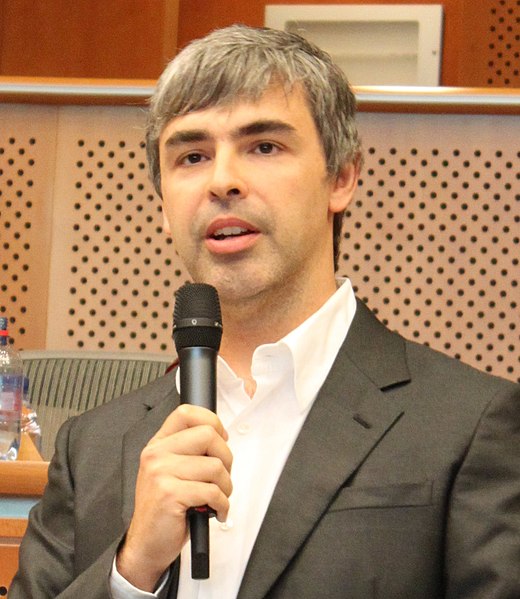Orchestrating Innovation: Unveiling Leadership Lessons from Apple’s Legacy

Decoding Apple’s Iconic Leadership Journey
In today’s rapidly evolving business landscape, effective leadership has emerged as a critical factor in determining a company’s success. Strong leaders have the ability to inspire their teams, drive innovation, and navigate through challenges, ultimately shaping the trajectory of their organizations. Few companies exemplify the power of exceptional leadership more than Apple Inc., a brand that has consistently redefined the technology industry and established itself as a global titan.
The story of Apple is not just about groundbreaking products and services; it is also a testament to the transformative potential of visionary leaders who have steered the company through its various stages. From its humble beginnings in a garage in Cupertino to its position as one of the most valuable companies in the world, Apple’s ascent has been marked by trailblazing innovations and unforgettable leadership stories.
This long-form article delves into the leadership lessons and stories that have defined Apple’s extraordinary journey. By examining the contributions of its most influential leaders and exploring the unique culture that has fostered its innovative spirit, we seek to unravel the leadership principles that have propelled Apple to unparalleled heights. We believe that these insights offer valuable lessons for aspiring leaders and established executives alike, as they strive to create successful organizations in an increasingly competitive landscape.
In the following sections, we will delve into the lives and legacies of Apple’s most prominent figures, starting with the company’s enigmatic co-founder, Steve Jobs. Jobs’ unorthodox leadership style and unwavering commitment to his vision played a crucial role in shaping Apple’s identity, laying the foundation for its future success. His story offers invaluable lessons in the power of vision, the importance of embracing failure, and the art of fostering a culture of innovation.
Next, we will explore the tenure of Tim Cook, who took the reins as Apple’s CEO after Jobs’ passing. Cook’s meticulous attention to detail, operational prowess, and commitment to the company’s core values have contributed significantly to Apple’s continued growth and diversification. From Cook’s leadership, we can glean insights on executing strategy, fostering a collaborative environment, and staying true to an organization’s guiding principles.
We will also investigate the innovative culture that has been central to Apple’s success. A deep dive into the company’s approach to design, research, and development will illuminate how its unique work environment has influenced leadership decisions and driven groundbreaking products. This examination will underscore the importance of interdisciplinary collaboration, balancing secrecy with transparency, and promoting intrapreneurship within a company.
Finally, we will address the challenges and controversies that have accompanied Apple’s ascent, discussing how the company’s leaders have navigated adversity and responded to ethical concerns. By examining their resilience and adaptability, we will distill key takeaways for leaders facing similar challenges in their own organizations.
As we embark on this journey through Apple’s leadership lessons and stories, we hope to not only celebrate the company’s enduring impact on the technology industry but also inspire current and future leaders to apply these insights in their own endeavors.
The Visionary – Steve Jobs
Few names in the annals of business history are as synonymous with visionary leadership as Steve Jobs. As the co-founder and driving force behind Apple, Jobs played a pivotal role in shaping the company’s identity, guiding it through several transformative phases. His unique and often controversial approach to leadership has left an indelible mark on the technology industry, and his story is a treasure trove of invaluable lessons for aspiring leaders.
Early Years and Founding Apple
Born in 1955 in San Francisco, California, Jobs was adopted by Paul and Clara Jobs. From an early age, he displayed a keen interest in electronics and engineering, which he nurtured alongside his longtime friend and future Apple co-founder, Steve Wozniak. In 1976, Jobs, Wozniak, and Ronald Wayne founded Apple Computer Inc. in Jobs’ family garage, introducing the Apple I computer the same year.
The company’s meteoric rise began with the launch of the Apple II in 1977, which became a symbol of the personal computing revolution. However, it was the introduction of the Macintosh in 1984 that truly solidified Apple’s position as an innovative force. Despite facing numerous challenges, including being ousted from his own company in 1985, Jobs returned to Apple in 1997, setting the stage for the brand’s renaissance.
The Significance of Jobs’ Unconventional Leadership Style
Steve Jobs’ leadership style was anything but conventional. His unyielding pursuit of perfection, ability to inspire his teams, and willingness to take risks characterized his tenure at Apple. Three key aspects of his leadership style stand out:
-
The “Reality Distortion Field” – Jobs had an uncanny ability to persuade others to believe in his vision, often pushing them beyond their perceived limitations. This intense charisma and passion, dubbed the “Reality Distortion Field,” allowed Jobs to drive his teams to accomplish seemingly impossible feats.
-
Focus on Simplicity and Minimalism – Jobs was obsessed with creating products that were not only technologically advanced but also aesthetically appealing and easy to use. His pursuit of simplicity and minimalism led to the development of some of the most iconic and user-friendly devices in history.
-
Trusting Intuition over Market Research – Jobs famously eschewed traditional market research, trusting his intuition and understanding of consumer desires. This approach enabled Apple to anticipate trends and create products that customers didn’t even know they wanted.
Key Leadership Lessons from Steve Jobs
-
The Power of Vision – Jobs’ unwavering commitment to his vision played a central role in Apple’s success. His ability to imagine a future where technology and design coalesced to create life-changing products enabled him to lead Apple through multiple industry revolutions. Aspiring leaders can learn from Jobs the importance of developing a compelling vision and instilling it in their teams.
-
Embracing Failure and Learning from It – Jobs’ journey was far from smooth. His ouster from Apple in 1985 and the initial struggles of his subsequent venture, NeXT, were major setbacks. However, these experiences taught Jobs invaluable lessons about leadership, humility, and perseverance. When he returned to Apple in 1997, he used these insights to steer the company toward unprecedented success.
-
Creating a Culture of Innovation – Jobs’ relentless pursuit of perfection and innovation fostered an environment where creativity and risk-taking were encouraged. By setting high expectations and giving his teams the freedom to experiment, Jobs was able to cultivate a culture that consistently pushed the boundaries of what was possible.
As we reflect on Steve Jobs’ extraordinary leadership journey, it becomes apparent that his unconventional approach played a crucial role in shaping Apple’s identity and success. By embracing the power of vision, learning from failure, and fostering a culture of innovation, Jobs laid the foundation for Apple’s future growth and left an indelible mark on the technology industry. His story serves as a powerful reminder that sometimes, it takes a visionary to challenge the status quo and redefine the boundaries of possibility.
In the following section, we will explore the tenure of Tim Cook, the man who took over the reins as Apple’s CEO after Jobs’ passing. Although he had big shoes to fill, Cook has continued to build on Jobs’ legacy while contributing his unique leadership style and expertise to the company’s ongoing success. Through his story, we will glean insights into the importance of operational excellence, collaboration, and staying true to an organization’s values in the face of adversity.
The Operational Mastermind – Tim Cook
While Steve Jobs is often celebrated for his visionary leadership, it is important to recognize the equally significant contributions of his successor, Tim Cook. As Apple’s CEO since 2011, Cook has demonstrated exceptional operational acumen, expanded the company’s product offerings, and reinforced its commitment to social and environmental responsibility. His leadership style, which emphasizes execution and collaboration, has played a vital role in Apple’s continued growth and diversification.
Background and Rise to CEO
Born in 1960 in Mobile, Alabama, Tim Cook earned a Bachelor of Science degree in Industrial Engineering from Auburn University and an MBA from Duke University’s Fuqua School of Business. Before joining Apple, Cook held positions at IBM and Compaq, gaining valuable experience in computer manufacturing and supply chain management.
Cook joined Apple in 1998 as Senior Vice President for Worldwide Operations, where he quickly made his mark by streamlining the company’s supply chain, reducing inventory, and increasing efficiency. His operational expertise proved crucial in supporting Apple’s rapid growth during this period. In 2005, Cook was promoted to Chief Operating Officer, and in August 2011, following Jobs’ resignation, he was named CEO of Apple.
Key Contributions to Apple’s Success
-
Streamlining Supply Chain – Cook’s background in operations and supply chain management enabled him to transform Apple’s manufacturing processes, making them more efficient and cost-effective. This, in turn, has allowed the company to scale production and deliver innovative products to market faster than its competitors.
-
Emphasis on Environmental Responsibility – Under Cook’s leadership, Apple has become a leader in corporate sustainability, significantly reducing its carbon footprint and adopting more environmentally-friendly materials and processes. This commitment to social responsibility has not only enhanced Apple’s reputation but also demonstrated the company’s willingness to invest in long-term, sustainable growth.
-
Expanding Product Lines – Cook has overseen the expansion and diversification of Apple’s product portfolio, with the introduction of new devices like the Apple Watch, AirPods, and HomePod. This has helped the company reach new markets, reduce its dependence on the iPhone, and maintain its position at the forefront of innovation.
Key Leadership Lessons from Tim Cook
-
Staying True to the Company’s Values – Cook’s leadership has consistently emphasized the importance of staying true to Apple’s core values, even as the company continues to evolve. By upholding principles like design excellence, user experience, and social responsibility, Cook has ensured that Apple remains a trusted and beloved brand around the world.
-
The Importance of Execution and Attention to Detail – Cook’s operational expertise and focus on execution have been critical in supporting Apple’s growth. His meticulous attention to detail and commitment to continuous improvement have enabled the company to maintain high levels of quality and efficiency, ultimately contributing to its competitive advantage.
-
Fostering a Collaborative Work Environment – Unlike Jobs’ more autocratic leadership style, Cook is known for promoting a more collaborative and inclusive work culture. By encouraging open communication, constructive feedback, and teamwork, Cook has fostered an environment in which employees feel empowered to contribute their best work.
As we examine Tim Cook’s tenure as Apple’s CEO, it becomes evident that his operational prowess, commitment to the company’s values, and collaborative leadership style have been instrumental in guiding the company through a period of significant growth and change. By maintaining a focus on execution, fostering a supportive work environment, and staying true to Apple’s core principles, Cook has successfully built on Jobs’ legacy while making his unique mark on the company’s history.
In the next section, we will delve into the innovative culture that has underpinned Apple’s success, exploring the company’s approach to design, research and development, and the unique work environment that has fueled its creative spirit. Through this examination, we will gain insights into how Apple’s distinctive culture has shaped its leadership decisions and driven the development of groundbreaking products that continue to redefine the technology landscape.
Apple’s Culture of Innovation
An integral component of Apple’s success lies within its deeply ingrained culture of innovation. The company’s unique organizational ethos, fostered by its pioneering leaders and infused into its operational framework, has been instrumental in its pursuit of ground-breaking ideas and the creation of revolutionary products.
The Role of Design in Apple’s Products
From the outset, Apple has placed an extraordinary emphasis on design. This focus extends beyond mere aesthetics; it embodies the belief that design and functionality should coalesce to deliver a seamless, intuitive user experience. The company’s commitment to design excellence is evident in its wide range of products, from the sleek contours of the MacBook to the minimalist elegance of the iPhone.
Steve Jobs famously stated, “Design is not just what it looks like and feels like. Design is how it works.” This philosophy has been a guiding principle for Apple, driving its relentless pursuit of products that are not only visually appealing but also user-friendly and intuitive. Every detail, from the user interface to the packaging, is meticulously thought out, reflecting Apple’s holistic approach to design.
Apple’s Approach to Research and Development
Apple’s approach to research and development (R&D) is as unique as its products. Unlike many other tech companies that focus on incremental improvements, Apple often takes bold leaps, envisioning products that consumers didn’t even know they wanted. This commitment to innovation is backed by substantial investment in R&D, facilitating the creation of pioneering technologies and software.
While Apple is known for its culture of secrecy, its R&D strategy is characterized by a balance of closed and open innovation. Apple maintains tight control over its proprietary technologies but also leverages external ideas and resources when necessary, as evidenced by its acquisitions of various tech startups and its collaborations with a range of partners.
How Apple’s Unique Culture Influences Leadership Decisions
Apple’s culture of innovation is deeply intertwined with its leadership approach. The company’s leaders have consistently fostered an environment that encourages creativity, risk-taking, and boundary-pushing, all while maintaining an unwavering focus on excellence.
-
The Importance of Interdisciplinary Collaboration – Apple’s leaders understand the power of bringing together diverse perspectives and expertise to foster innovation. The company’s organizational structure encourages cross-functional collaboration, enabling engineers, designers, and marketers to work together closely from the early stages of product development.
-
The Balance between Secrecy and Transparency – While Apple is renowned for its culture of secrecy, it also fosters a high degree of transparency within the organization. Leaders at Apple often share the company’s vision, strategies, and challenges with employees, fostering a sense of shared purpose and facilitating collective problem-solving.
-
Encouraging Intrapreneurship within the Company – Apple’s leadership promotes a culture of intrapreneurship, encouraging employees to take ownership of their ideas and act like entrepreneurs within the company. This approach has led to the development of many of Apple’s innovative features and products.
Apple’s culture of innovation is a product of its unique approach to design, research and development, and leadership. This culture is a powerful driver of the company’s success, enabling it to continually push the boundaries of technology and redefine the consumer experience. In the following section, we will discuss the challenges and controversies that Apple has faced, and how its leaders have navigated these issues to maintain the company’s upward trajectory.
Navigating Challenges and Controversies
No company, however successful, is immune to challenges and controversies. Apple, despite its remarkable achievements, has had its share of adversity. From legal battles and ethical concerns to operational setbacks and market competition, these instances have tested the resilience of Apple’s leadership and the strength of its values.
Legal Battles and Ethical Concerns
One of the most significant legal battles Apple has faced is its long-standing dispute with Samsung over patent infringements, a case that spanned multiple continents and several years. These litigations underscored the importance of protecting intellectual property in the fiercely competitive tech industry.
Apple has also faced ethical questions regarding its supply chain practices. Allegations of poor working conditions and labor violations at some of its supplier factories, particularly in China, have put the company in the spotlight. These challenges have forced Apple to take significant steps to improve its supplier oversight, demonstrate greater transparency, and uphold its commitment to corporate social responsibility.
Operational Setbacks
Apple’s history is not without operational setbacks. One notable example is the initial reception of the Apple Maps app, which was launched in 2012 as a competitor to Google Maps. The app was heavily criticized for its inaccuracies and lack of details. However, instead of retreating, Apple acknowledged the flaws and has since invested significantly in enhancing the app’s functionality and accuracy, demonstrating the company’s resilience and commitment to product excellence.
Market Competition
In an industry defined by rapid technological advancements, Apple faces intense competition from tech giants like Samsung, Google, and Huawei. Navigating the complexities of the global tech market requires strategic foresight, innovative product development, and a deep understanding of consumer needs and trends.
Key Leadership Lessons from Navigating Challenges
-
Resilience in the Face of Adversity: Apple’s journey shows that resilience is a crucial attribute for any successful organization. The company’s ability to bounce back from setbacks, learn from its mistakes, and continue to innovate has been a testament to its strong leadership.
-
Adherence to Ethical Practices: The controversies surrounding Apple’s supply chain practices have highlighted the importance of ethical leadership. Apple has made significant strides in improving working conditions at its supplier factories and promoting transparency, demonstrating its commitment to corporate social responsibility.
-
Strategic Agility: In a competitive market, strategic agility is key. Apple’s leadership has continually shown the ability to anticipate market trends, adapt its strategies, and innovate its product offerings to maintain a competitive edge.
The challenges and controversies that Apple has encountered provide valuable lessons in resilience, ethical leadership, and strategic agility. They serve as a reminder that, while success is often celebrated, it is the ability to navigate adversity that truly defines an organization’s strength and character.
As we conclude this exploration of Apple’s leadership lessons and stories, it is clear that the company’s success is not simply a product of its innovative products or market dominance. Instead, it is the result of visionary leadership, a culture of innovation, resilience in the face of adversity, and a commitment to upholding its core values. These elements have not only propelled Apple to the forefront of the technology industry but also left an indelible mark on the global business landscape.
The Future of Leadership at Apple
As we look towards the future, Apple remains a beacon of innovation and leadership within the tech industry. Yet, like all companies, it will face new challenges and opportunities that will test its leadership and shape its trajectory. In this section, we will explore some of these forthcoming challenges and discuss how Apple’s leadership might navigate them.
Adapting to Technological Advances
With technology evolving at a breakneck pace, one of the key challenges for Apple will be staying ahead of the curve. Emerging technologies, such as artificial intelligence (AI), augmented reality (AR), and quantum computing, present both enormous opportunities and significant challenges. Apple’s leadership will need to strategically leverage these technologies to enhance its product offerings, improve operational efficiency, and deliver superior customer experiences. This will require a deep understanding of these technologies, investment in research and development, and a willingness to take calculated risks.
Navigating Regulatory Changes
As tech companies grow in size and influence, they face increasing scrutiny from regulatory bodies worldwide. Issues like data privacy, antitrust concerns, and taxation are becoming increasingly prominent. Apple’s leadership will need to navigate these complex regulatory landscapes, balancing the need for innovation and growth with compliance and ethical considerations. This will require strategic foresight, strong legal acumen, and a commitment to ethical business practices.
Addressing Social and Environmental Challenges
In today’s world, companies are expected to play a significant role in addressing social and environmental challenges. From climate change and resource scarcity to inequality and digital divide, these issues require concerted, collective action. As a global tech leader, Apple will play a crucial role in this endeavor. The company’s leadership will need to make strategic decisions that align business growth with social and environmental responsibility, reinforcing its commitment to corporate citizenship and sustainable business practices.
Key Leadership Lessons for the Future
-
Embracing Lifelong Learning: In the face of rapid technological change, leaders at Apple must embrace lifelong learning. By continually updating their knowledge and skills, they can make informed decisions, foster innovation, and drive the company’s success in a rapidly evolving tech landscape.
-
Balancing Innovation and Compliance: Navigating the complex regulatory environment of the tech industry requires a delicate balance between innovation and compliance. Apple’s leaders must demonstrate the ability to adapt to changing laws and regulations while maintaining the company’s innovative spirit.
-
Prioritizing Sustainable Growth: As societal expectations shift, Apple’s leadership must prioritize sustainable growth. This involves making decisions that not only drive business success but also contribute positively to society and the environment.
The future of leadership at Apple will require a blend of technological savvy, strategic agility, and a deep commitment to ethical and sustainable business practices. By upholding these principles, Apple’s leaders can continue the company’s legacy of innovation and excellence, while shaping a future that aligns with the evolving needs and aspirations of its stakeholders. In doing so, they will not only secure Apple’s continued success but also contribute to a more sustainable and inclusive world.
Reflections on Apple’s Leadership Legacy
Apple’s journey, from a startup in a garage to one of the world’s most valuable companies, is a testament to the power of visionary leadership, strategic foresight, and a deeply ingrained culture of innovation. As we reflect on the company’s past and look towards its future, there are several key takeaways that can inform and inspire leaders across industries and contexts.
The Power of Visionary Leadership
From Steve Jobs’ creative genius to Tim Cook’s operational acumen, Apple’s success has been driven by visionary leaders who have dared to challenge the status quo and redefine the boundaries of the possible. They have demonstrated the power of visionary leadership to shape an organization’s trajectory, inspire its workforce, and make a lasting impact on the world.
The Importance of a Culture of Innovation
Apple’s culture of innovation, characterized by an unwavering commitment to design excellence, bold exploration of new technologies, and a fostering of intrapreneurship, has been a key driver of its success. This culture has not only enabled the company to create groundbreaking products but also fostered a sense of purpose and commitment among its employees.
Resilience in the Face of Adversity
Apple’s journey has not been without challenges. From legal disputes and ethical concerns to operational setbacks and market competition, the company has faced its share of adversity. Yet, through these challenges, Apple’s leaders have demonstrated remarkable resilience, turning setbacks into opportunities for learning and growth.
The Role of Ethics and Corporate Social Responsibility
Apple’s experience has underscored the importance of ethical leadership and corporate social responsibility. From improving working conditions in its supply chain to prioritizing environmental sustainability, the company has shown that business success and social responsibility can and should go hand in hand.
Looking Towards the Future
As Apple looks towards the future, it faces a new set of challenges and opportunities. Navigating these will require continued investment in innovation, strategic adaptation to regulatory changes, and a deep commitment to addressing social and environmental challenges. The leaders who will guide Apple into this future will need to embody the company’s core values while also demonstrating the agility, foresight, and ethical acumen necessary to navigate an ever-evolving global landscape.
Final Reflections
The leadership lessons and stories of Apple serve as a powerful reminder of the potential of visionary leadership, the transformative power of innovation, and the importance of resilience, ethics, and corporate social responsibility. As we navigate our own leadership journeys, let us draw inspiration from these lessons and strive to lead with vision, foster a culture of innovation, navigate challenges with resilience, uphold the highest ethical standards, and commit ourselves to creating a more sustainable and inclusive future. For it is through such leadership that we can truly make a difference in our organizations and in the world.






